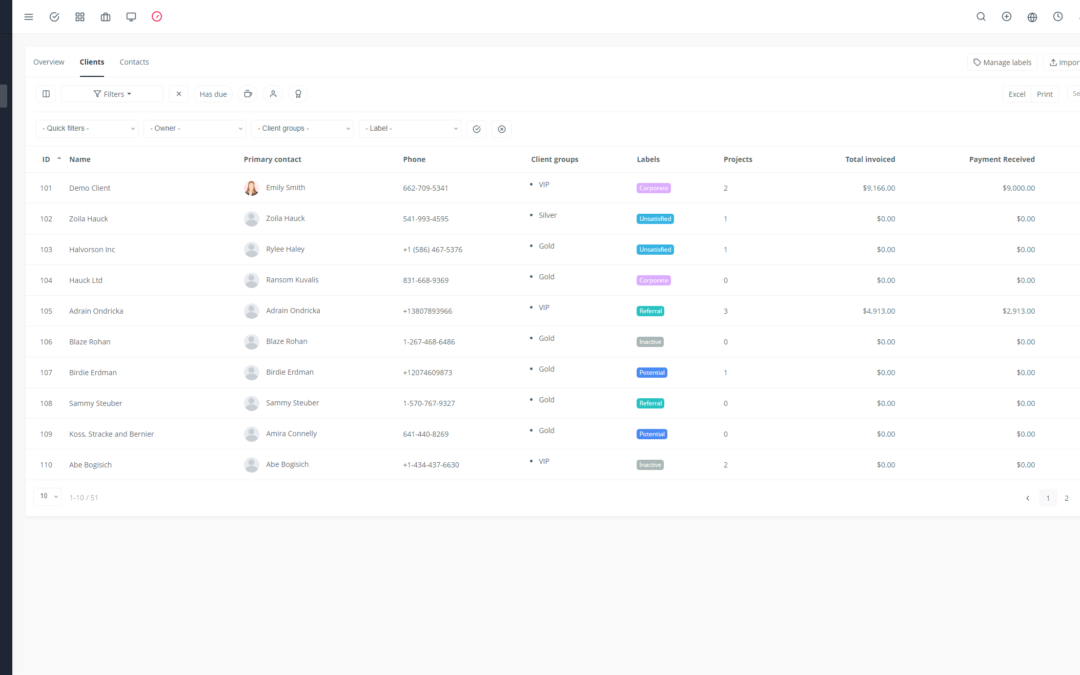Yoneos is a powerful tool for managing your projects, quotes, and clients. But to maximize your success, it’s essential to track the right Key Performance Indicators (KPIs).
Here’s a list of the main KPIs to monitor in Yoneos, along with tips for interpreting and improving them:
1. Sales Performance 🚀
Quote Conversion Rate: How many quotes are turned into contracts? 📊 A high conversion rate indicates the effectiveness of your proposals and your ability to meet client needs.
Number of Quotes Created: Track your sales team’s activity. 📈 An increase in the number of quotes created suggests good momentum.
Quote Success Rate: What percentage of your quotes are accepted by clients? 🎯 A high success rate means your quotes are competitive and compelling.
Average Time to Finalize a Quote: How long does it take your team to create and send a quote? ⏱️ Quick response times improve the client experience.
Average Quote Value: What is the average value of your proposals? 💰 A high number indicates substantial projects and profitability potential.
2. Project Management 🏗️
Number of Projects Created: An indicator of your company’s workload. 👷♀️ An increase in the number of projects suggests business growth.
Project Success Rate: How many projects are delivered on time and according to specifications? ✅ A high rate demonstrates the reliability and efficiency of your team.
Average Time to Complete a Project: How long does a project last from planning to delivery? ⏳ A short completion time indicates efficiency and responsiveness.
Average Project Value: What is the average financial value of your projects? 💰 A high number indicates substantial projects and potential profitability.
3. Finances and Profitability 💰
Number of Billable Hours: How many work hours are billed to your clients? 🕐 Accurate tracking is crucial for billing and cost management.
Total Revenue: The revenue generated by your company. 📈 Regular tracking helps identify trends and forecast future revenue.
Total Costs: All costs associated with completing your projects. 📉 Cost analysis is essential for optimizing profitability.
Profit Margin: The difference between your revenue and costs. 💰 A high profit margin is a sign of financial health.
4. Client Satisfaction and Retention 🤝
Client Satisfaction (Ratings and Reviews): How do your clients rate your work? 🌟 Positive ratings and reviews indicate the quality of your service.
Client Retention Rate: How many clients come back to you for new projects? 🔁 A high retention rate indicates significant client satisfaction.
5. Business Development and Opportunities 💼
Number of New Opportunities: How many new collaboration opportunities do you identify? 💡 A high number reflects your sales team’s activity.
Opportunity Conversion Rate: How many opportunities turn into concrete projects? 🎯 A high rate indicates sales efficiency.
Number of Contacts: How many potential contacts do you have in your database? 👤 A large contact base offers growth potential.
6. Yoneos Feature Usage 💻
Number of Tasks Completed: How many tasks are completed in Yoneos? ✅ Regular tracking allows you to assess your team’s efficiency.
Yoneos Feature Utilization: How are the different features of Yoneos used by your team? 📊 An analysis of usage allows you to identify the most useful features and optimize their use.
By tracking these key performance indicators, you can gain a comprehensive overview of your company’s health.
Remember:
Set clear goals for each KPI.
Monitor your progress regularly.
Use data to make informed decisions.
Adjust your strategies based on the results.
Yoneos provides the tools you need to succeed. By using the right indicators and following the right strategies, you can maximize your success! 🚀

